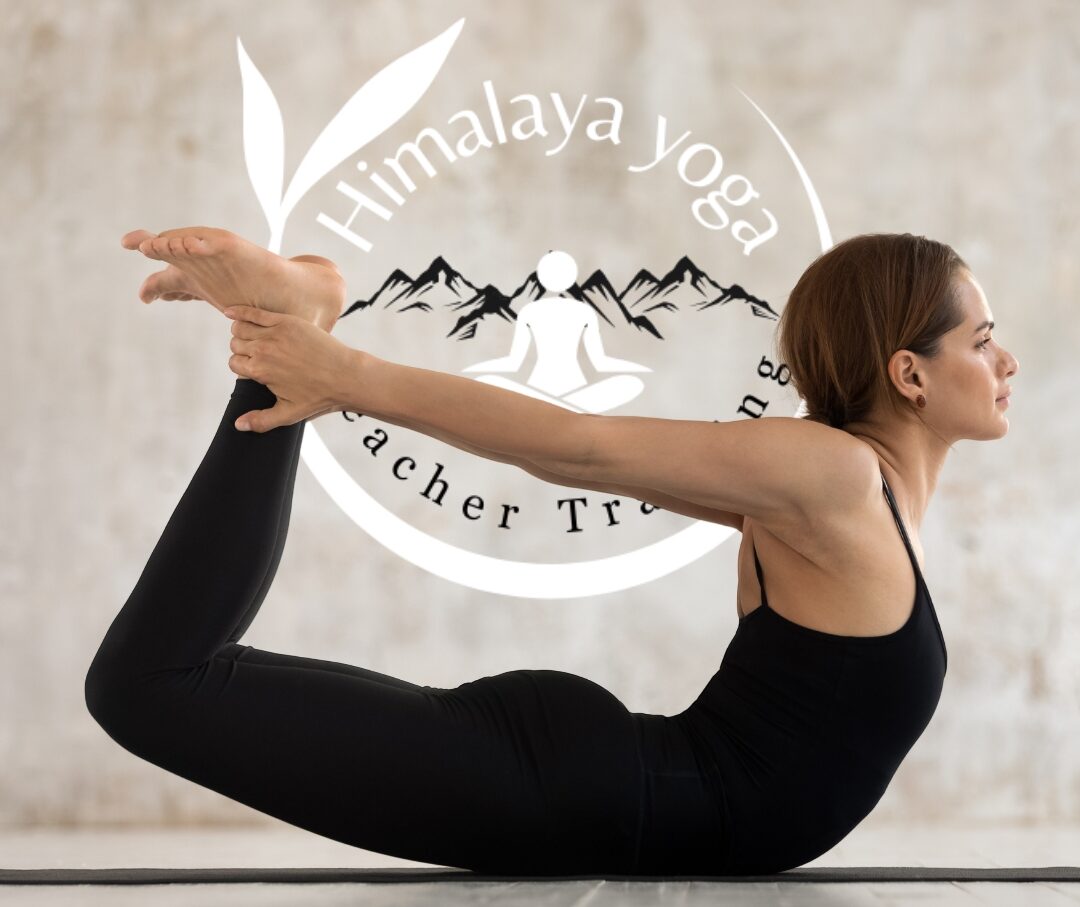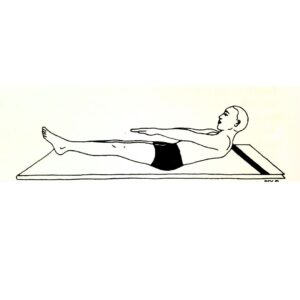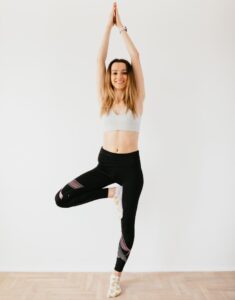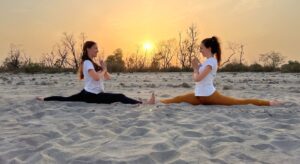Though yogasana originated in India, it was mostly performed by elder generations. With a fundamental shift in trends, yogasana is now not only performed but also embraced by new generations! It can capture the hearts of everyone with its ease of use and unbelievable outcomes.
Dhanurasana, often known as the Bow Pose, is one of the yogasana positions. This asana covers everything, including the spine and abdomen.
Now, if you, like most of people, are bound to a desk and lead an active life, you do need Dhanurasana.
Please keep on reading to learn more about this asana.

What is Dhanurasana
Dhanurasana, also referred to as the Bow Pose in yoga, is a wonderful pose known for its multiple health advantages. Dhanurasana is derived from the Sanskrit word ‘Dhanush,’ which means bow, whereas Asana means pose or posture.
This yoga posture is more than simply physical exercise; it is a whole practice that focuses on the body, mind, and soul. Bow pose increases strength and flexibility by extending muscles in the back, belly, thighs, and hip flexors, Besides to its physical advantages, has digestive therapeutic effects and can help relieve back pain. Its gentle stretches open up the front of the body, including the belly and chest, encouraging deep breathing and better circulation.
Furthermore, practicing Dhanurasana promotes attention and inner calm. When you focus on the balance of effort and surrender, you might feel more tranquil and self-aware, which contributes to general well-being.
How to do it?
To minimize the risk of injury and to gain the greatest health advantages from the bow pose, it is important to understand the correct technique. The following are the steps to doing the bow pose:
- Starting from the floor in the Crocodile pose (Makarasana), with your feet wide apart and looking outward, you may perform Dhanurasana. Your body takes on the appearance of a crocodile. It’s practiced in a prone position as a way to relax.
- With your face facing down, lie on your stomach. Stretch your legs, bring your arms close to your body, and take long breaths to help your spine relax.
- Bring your legs and feet as near to your lower back as comfortable while inhaling, bending your knees and pointing your toes toward you.
- Using your arms extended slowly backward, grasp the toes of your right and left feet with your respective hands.
- As you exhale, elevate your upper body off the floor and bring your legs upward by lifting your knees over the floor. Hands and arms resemble bowstrings. If you’re just starting out, you can stretch your legs upward and utilize a wrapped blanket beneath your knees. It could provide you some further assistance.
-
Raise your head slowly and pull it back as far as you can. Permit the weight of your body to rest on your abdomen.
-
Avoid placing your ribcage or pelvic bones on the ground.
-
Avoid joining the legs at the knees when elevating them as this will result in insufficient leg elevation. After extending your body fully upward, bend your ankles, knees, and thighs. For a few minutes, stay in the bow position, then gradually come back to the starting position.
Beginners may choose to make minor adjustments. If it is hard to reach the ankles, you can use a yoga strap or ask for assistance from someone nearby. After putting it around your ankles, raise yourself up by tightly holding the strap.
Benefits of Dhanurasana (Bow pose)
- It aid with back flexibility and strengthen the abdominal muscles.
- It improve blood flow to the connective tissues, muscles, and organs.
- It straighten the slumped shoulders and bent back.
- It aid in toning the legs and arms.
- Stretching the muscles in the neck, shoulders, and chest may be beneficial.
- It could arouse the abdominal and cervical organs.
- It help improve proper body alignment.
- It might be helpful in treating conditions of the chest.
- It could fix any kidney-related issues you have.
- It help with indigestion, constipation, and liver sluggishness.
- It could be a useful way to relieve tension and lessen exhaustion.
- In order to preserve the body’s hormones operating at their best, it may also stimulate and regulate the thyroid and adrenal glands.
Contraindications of Dhanurasana (Bow Pose)
Avoid doing Bow Pose, or Dhanurasana, if you have
- Blood pressure that is either high or low
- Hernia
- Neck injuries
- lower back pain
- migraine or headache
- recently done abdominal surgery
- Pregnant women should refrain from doing this yoga position.
Dhanurasana, like many yoga positions, becomes more accessible with practice. However, it is essential to emphasize that performing yoga asanas should always be done under the supervision of a skilled and knowledgeable yoga instructor.
Discover our comprehensive yoga teacher training in Rishikesh programs, hidden in the peaceful Himalayas. Our 200 hour yoga teacher training in Rishikesh courses are designed to give comprehensive instruction under the supervision of qualified yoga instructors. Explore the transforming adventure of yoga with Himalaya Yoga Teacher Training yoga school.



